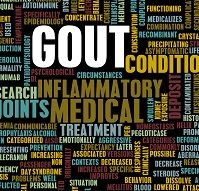Ultrasound Images of Gout Defined
Ultrasound may be an excellent diagnosis tool for gout, if doctors can agree on what they are looking at.

Ultrasound may be an excellent diagnosis tool for gout, but only if doctors can agree on what they are looking at.
A group of 32 international rheumatologists met to summarize work performed by OMERACT (Outcomes Measures in Rheumatology) Ultrasound Working Group on the validation of using ultrasound as an outcome measure in gout. The resulting report is published in the September issue of the Journal of Rheumatology.
Conventional diagnosis requires not just an examination and history, but blood tests and sometimes, joint punctures to take samples of crystalized urate for analysis. Ultrasound may be a more feasible option because it is patient-friendly, safe, and non-invasive, has no radiation, and it is possible to target multiple areas in the same session. Early and accurate diagnosis is important, not only to prevent pain and disability, but to prevent renal failure and cardiovascular disease.
“Development of [ultrasound] consensus-based definitions of gout lesions is the first initiative towards achieving a higher degree of homogeneity and comparability of results between studies and in daily clinical practice,” the authors wrote.
The group carried out a series of iterative exercises based on the current literature on ultrasound images of gout. With more than 80 percent agreement among participants, they developed definitions for four elementary lesions:
- Double Contour: “Abnormal hyperechoic band over the superficial margin of the articular hyaline cartilage, independent of the angle of insonation and which may be either irregular or regular, continuous, or intermittent and can be distinguished from the cartilage interface sign.”
- Tophus [independent of location (e.g., extraarticular/intraarticular/intratendinous)]: “A circumscribed, inhomogeneous, hyperechoic and/or hyperechoic aggregation (which may or may not generate posterior acoustic shadow), which may be surrounded by a small anechoic rim.”
- Aggregates [independent of location (intraarticular/intratendinous)]: “Heterogeneous hyperechoic foci that maintain their high degree of reflectivity even when the gain setting is minimized or the insonation angle is changed, and which occasionally may generate posterior acoustic shadow.”
- Erosions: “An intra- and/or extraarticular discontinuity of the bone surface (visible in 2 perpendicular planes).”
They then tested the reliability of the definitions by looking at 110 static ultrasound images of the 4 lesions defined from feet and knees, which were taken from the Internet; 20 of the images were shown twice in the exercise to test reliability between and within each reader. They then examined scans in eight ultrasound examinations of patients.
When put to the test, they found that the agreement on definitions ranged from moderate to excellent the static images, but somewhat lower in patients. The physicians found that they could more reliably identify double contour lesions. Soft tissue aggregates had the lowest level of reliability, and need to be refined.
The authors noted that to improve these results, they will need to standardize scanning techniques.